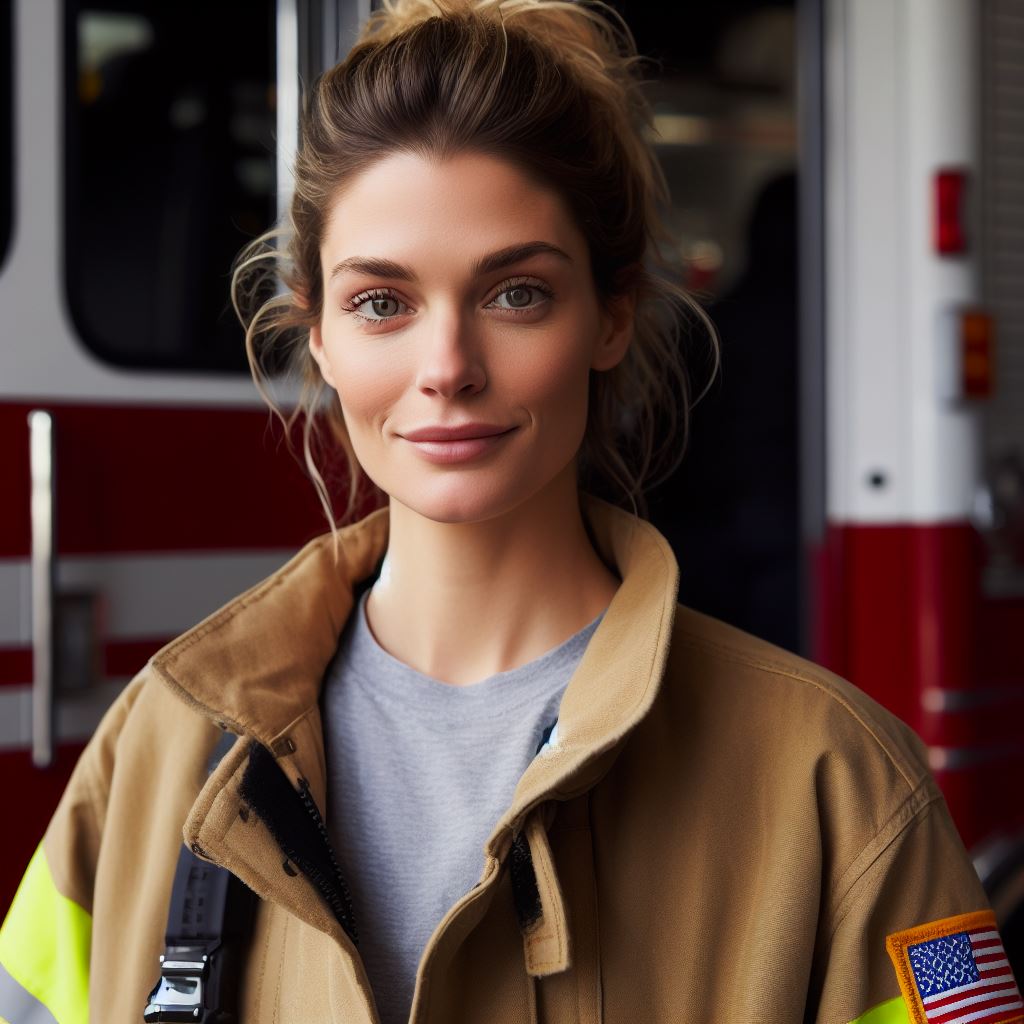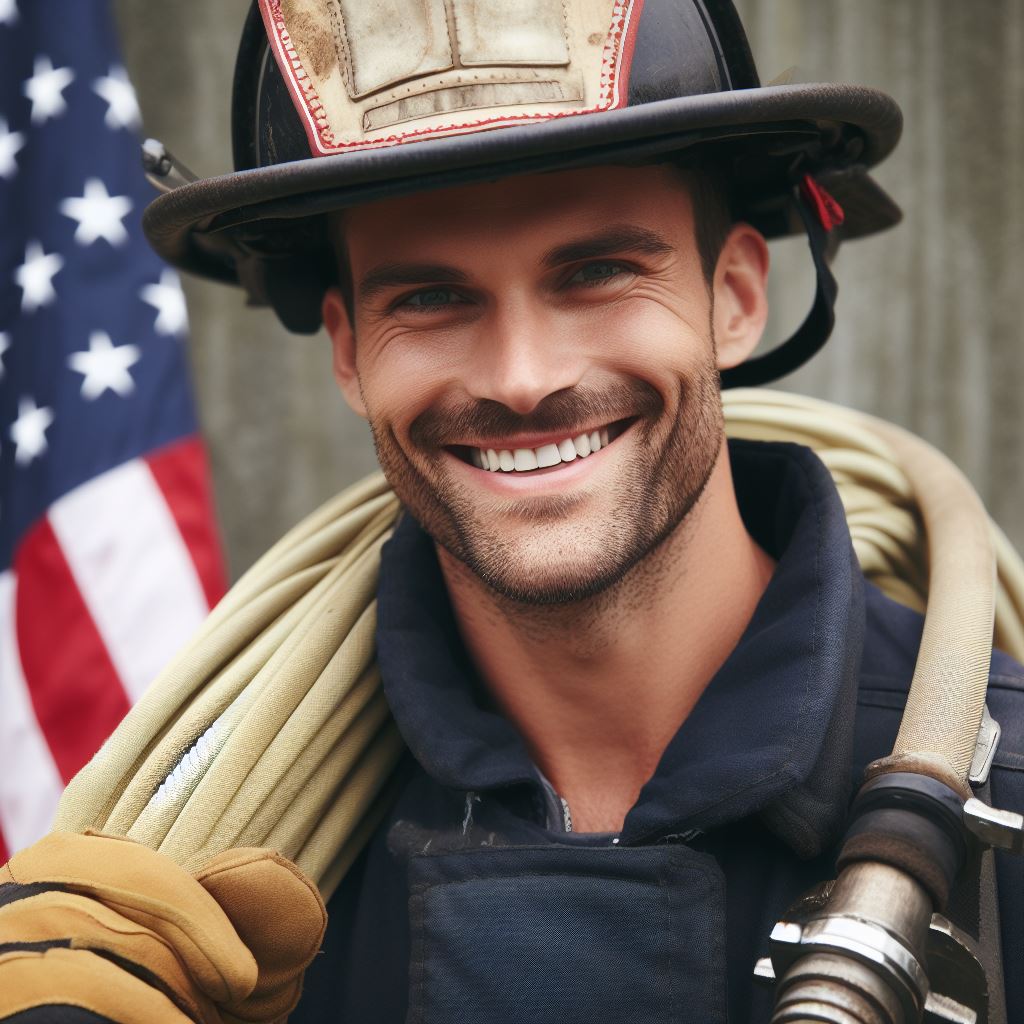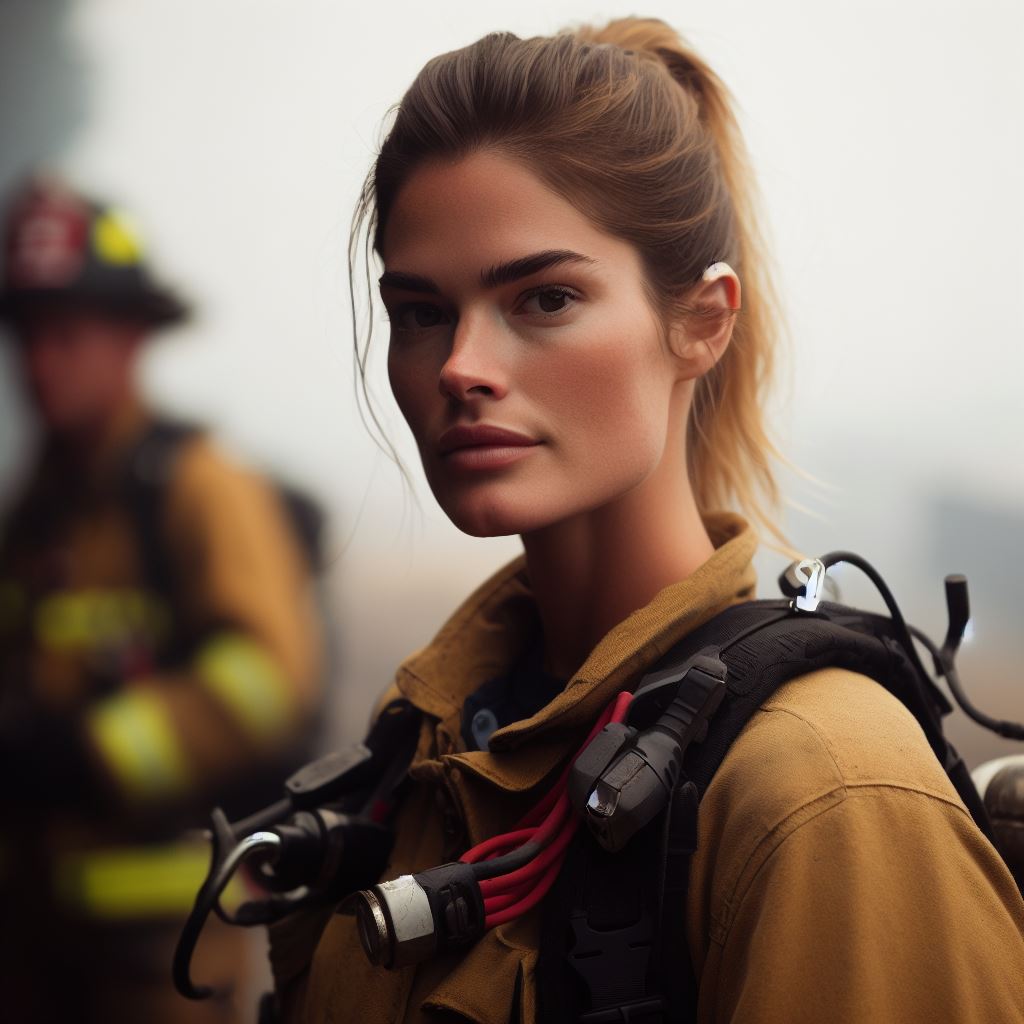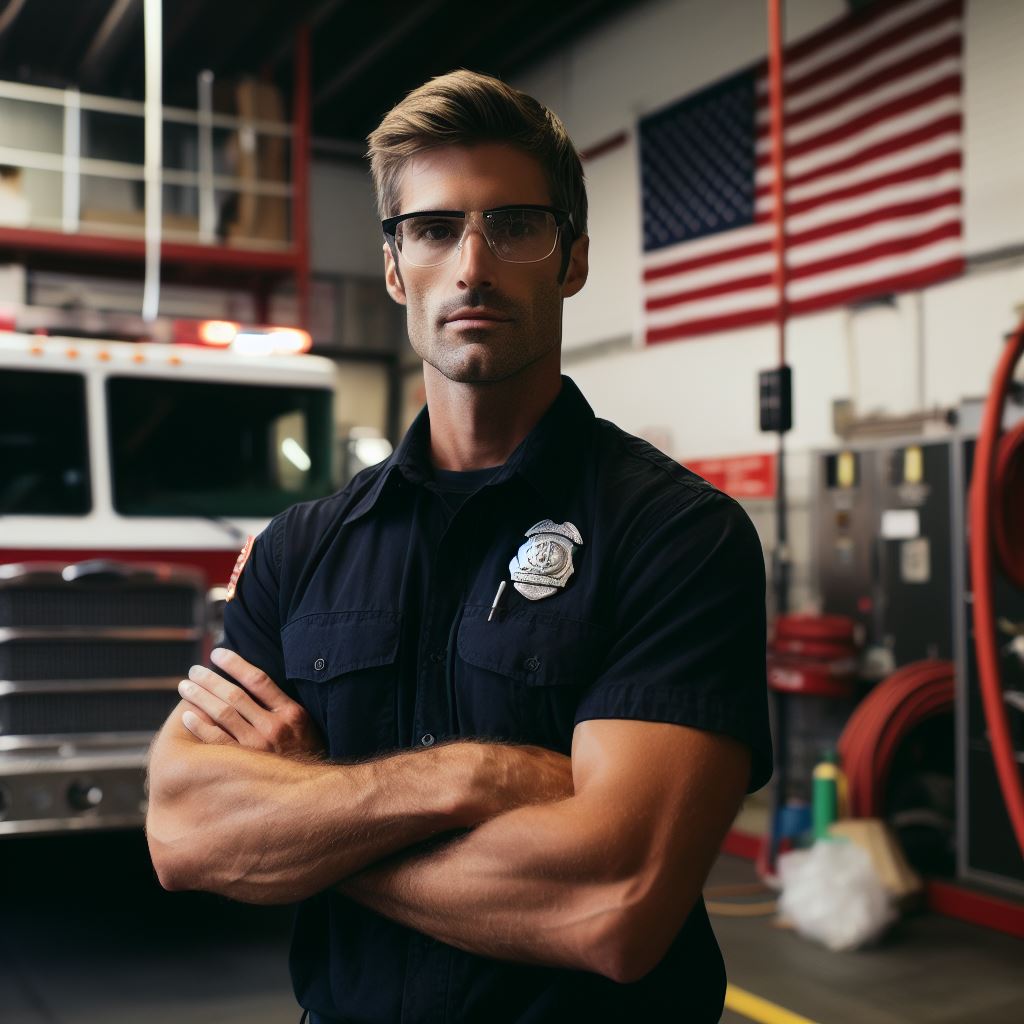Introduction
Briefly introduce the topic of advancements in firefighting gear
Advancements in firefighting gear have revolutionized the way firefighters combat fires and ensure their safety.
These innovations have significantly enhanced their effectiveness on the front lines, reducing injuries and improving overall firefighting operations.
With the ever-increasing dangers and challenges faced by firefighters, these advancements play a crucial role in their protection and success.
Evolution in firefighting gear, from heat-resistant clothing to advanced communication systems, enhances safety and efficiency in this high-risk profession.
These advancements allow firefighters to perform their duties with greater confidence and effectiveness, enabling faster response times and more successful rescue missions.
The significance of these innovations cannot be overstated.
Facing extreme conditions like heat and toxic fumes, modern firefighting gear’s reliability and protection are crucial for ensuring the well-being of brave men and women risking their lives to save others.
Additionally, these advancements have created a safer work environment, reducing long-term health impacts and improving overall morale among firefighters.
The continuous improvement and development of firefighting gear demonstrate the commitment of the United States to prioritize the safety and effectiveness of its firefighting personnel.
As technology advances and new challenges arise, the innovation in firefighting gear will undoubtedly continue, further enhancing the capabilities and success of these dedicated professionals.
Historical Background
Evolution of firefighting gear in the United States
Firefighting has evolved significantly over the years in the United States, with advancements in gear and equipment playing a crucial role in enhancing firefighter safety and efficiency.
Early challenges faced by firefighters and the basic protective equipment used
The early days of firefighting were far from ideal. In the late 17th and early 18th centuries, firefighters faced numerous challenges as they struggled to control and extinguish fires.
Back then, equipment was primitive, consisting mainly of buckets, ladders, and axes.
During this period, volunteers formed rudimentary fire brigades, and their bravery was commendable, but their lack of proper gear put their lives at risk.
Firefighters had no protective clothing to shield them from the intense heat and flames.
In the early 19th century, the first significant innovation in firefighting gear occurred with the introduction of leather fire helmets.
These helmets provided some protection but were far from ideal. Nonetheless, they marked the beginning of a new era in firefighter safety.
As the 19th century progressed, advancements continued to be made. In the 1820s, rubber-lined cotton hosepipes were introduced, revolutionizing the way firefighters tackled fires.
These hoses were lighter, more flexible, and enabled firefighters to direct water more accurately towards the source of the fire.
Another breakthrough came in the form of the first fireproof suit, which was invented by Henry S. Parmelee in 1871.
This suit was coated with a fire-resistant material, offering firefighters an added layer of protection. The suit, although heavy and cumbersome, set the stage for further innovations in protective gear.
In the early 20th century, the United States witnessed a surge in advancements in firefighting gear.
Modernized breathing apparatuses, including self-contained breathing apparatus (SCBA), became widely adopted.
These devices allowed firefighters to operate in smoke-filled environments and protected them from inhaling toxic gases.
Evolution of Firefighting Gear: From Nomex to Thermal Imaging and Beyond
The invention of synthetic materials such as Nomex and Kevlar in the mid-20th century further transformed firefighting gear.
These materials were more resistant to heat and flame, offering improved protection to firefighters. Fire-resistant gloves and boots made of these materials became standard gear for firefighters.
The 1980s brought about the advent of thermal imaging cameras, enabling firefighters to locate victims and hot spots within burning structures.
This technology greatly enhanced their ability to navigate through smoke-filled environments quickly and efficiently.
More recent developments in firefighting gear have focused on using advanced fabrics that provide enhanced protection while remaining lightweight and breathable.
These fabrics incorporate moisture-wicking properties to keep firefighters cool and comfortable during intense firefighting operations.
Furthermore, advancements in communication technology have been crucial in improving firefighter safety.
The integration of radios and portable handheld devices allows firefighters to communicate with each other and receive critical information in real-time, ensuring efficient coordination during fire incidents.
In general, firefighting gear in the United States has come a long way from the humble beginnings of buckets and axes.
Advances in technology and materials have transformed the way firefighters combat fires and protect themselves.
With ongoing research and innovation, the future of firefighting gear looks promising, with the focus firmly on firefighter safety and efficiency.
Modern Firefighting Gear
In recent years, advancements in technology and materials have led to significant improvements in firefighting gear.
These developments have greatly enhanced the safety and effectiveness of firefighters in their crucial role of protecting lives and property.
Essential Components of Modern Firefighting Gear
- Protective Clothing: Turnout gear, including jackets and pants, shields firefighters from the intense heat and flames they encounter.
- Helmets: Firefighters wear helmets to protect their heads from falling debris and impacts during rescue operations.
- Boots: Firefighting boots, made from durable materials, provide stability, grip, and protection against heat and water.
The Importance of Protective Clothing
Protective clothing is of utmost importance in firefighting, as it acts as a barrier between firefighters and the hazards they face.
Turnout gear, with its multiple layers, offers thermal protection by reflecting heat and preventing its transfer to the body.
It also resists cuts, abrasions, and punctures, safeguarding firefighters from sharp objects and debris.
Advancements in Materials
Advancements in materials used for firefighting gear have significantly improved the performance and durability of the equipment.
Heat-resistant fabrics, such as Nomex and Kevlar, provide enhanced heat and flame resistance.
These fabrics have excellent thermal insulation properties, protecting firefighters from burns and reducing the risk of heat stress.
Moreover, composite materials, such as carbon fiber reinforced polymers, are now employed to manufacture lightweight yet robust components, ensuring greater flexibility and comfort for firefighters.
The Role of Breathing Apparatus
Breathing apparatus plays a critical role in firefighting, providing firefighters with a continuous supply of clean air in hazardous conditions.
The development of self-contained breathing apparatus (SCBA) revolutionized firefighter breathing protection.
SCBA units consist of a high-pressure tank, a regulator, and a facepiece. They allow firefighters to breathe independently, preventing smoke inhalation, toxic gases, and oxygen deficiency.
Earlier systems required a constant supply of air from external sources, limiting firefighters’ mobility and reducing the amount of time they could spend in hazardous environments.
The advent of SCBA technology enabled firefighters to work more efficiently and endure longer durations in smoke-filled buildings, improving their chances of successful rescue operations.
In review, advancements in firefighting gear have proven to be crucial in enhancing the safety and effectiveness of firefighters.
The use of protective clothing, such as turnout gear, helmets, and boots, ensures that firefighters are shielded from flames, heat, debris, and other hazards.
The development of heat-resistant fabrics and composite materials has significantly improved the durability and performance of firefighting gear.
Furthermore, the introduction of self-contained breathing apparatus has revolutionized firefighter breathing protection, allowing them to work more efficiently and safely in hazardous environments.
These innovations in firefighting gear continue to save lives and protect our heroes on the front lines of fire emergencies.
Advancements in Firefighting Gear: U.S. Innovations
Firefighters play a crucial role in protecting lives and property during emergency situations.
Over the years, technological advancements have greatly enhanced firefighting gear, enabling firefighters to be more effective and efficient.
In this section, we will explore some of the key innovations in firefighting gear in the United States that have revolutionized the industry.
Transform Your Career Today
Unlock a personalized career strategy that drives real results. Get tailored advice and a roadmap designed just for you.
Start NowRead: The Role of the U.S. Coast Guard: Beyond Sea Rescues
Technological Innovations
Technology has played a significant role in improving firefighting gear, making it more advanced than ever before.
These innovations have not only enhanced the effectiveness of gear but also improved firefighter safety.
Thermal Imaging Cameras
One of the most significant advancements in firefighting gear is the use of thermal imaging cameras.
These cameras enable firefighters to navigate through smoke-filled environments and detect victims more effectively.
The cameras use infrared radiation to create images, highlighting temperature differences and guiding firefighters to potential hazards and individuals in need of assistance.
Integration of Communication Devices
Communication is crucial for the coordination of firefighting operations. In recent years, there has been a significant integration of communication devices within firefighter gear.
These devices allow firefighters to communicate with each other and the incident command center, enhancing coordination and ensuring timely response.
With built-in microphones and speakers, firefighters can relay important information and receive instructions without relying on external devices.
Improved Personal Alert Safety Systems (PASS)
Firefighter safety is of paramount importance, and advancements in personal alert safety systems (PASS) have drastically improved their protection on the job.
PASS devices, worn by firefighters, provide an automatic distress signal when a firefighter becomes immobile or motionless for an extended period.
These devices can track the location of firefighters and alert their teammates if they are in distress, enabling swift rescue operations.
Impact on Firefighter Safety
The advancements in firefighting gear discussed above have had a significant impact on firefighter safety, ultimately saving lives.
Enhanced Navigation and Detection
By utilizing thermal imaging cameras, firefighters can navigate through smoke-filled environments more efficiently.
They can detect potential dangers, such as hotspots or structural weaknesses, and identify victims who may be unable to communicate their location.
These advancements have greatly reduced the risk of firefighters becoming disoriented or encountering hazardous conditions.
Improved Coordination
The integration of communication devices within firefighter gear has revolutionized on-site coordination. Firefighters can relay critical information to their team and receive instructions promptly.
This real-time communication allows for better resource allocation, optimal decision-making, and improved overall effectiveness in managing fire incidents.
Enhanced Rescue Operations
The implementation of improved personal alert safety systems has significantly enhanced rescue operations.
With PASS devices, firefighters in distress can be quickly located, reducing response times and increasing the chances of a successful rescue.
These systems provide an additional layer of safety, ensuring firefighter well-being during challenging firefighting operations.
The technological advancements in firefighting gear have revolutionized the industry, enabling firefighters to perform more effectively and safely.
Thermal imaging cameras, integrated communication devices, and improved personal alert safety systems have significantly enhanced navigation, coordination, and rescue operations.
As technology continues to advance, it is certain that firefighting gear will become even more sophisticated, further empowering firefighters in their mission to protect lives and property.
Read: Financial Planning for U.S. Military Personnel & Families
Specialized Gear for Specific Hazards
In recent years, there have been significant advancements in firefighting gear in the United States.
These innovations have focused on developing specialized gear to combat specific hazards, providing better protection for firefighters in dangerous situations.
One important area of development has been in the creation of specialized gear to address different types of hazards.
Firefighters face a range of dangers, from extreme heat and flames to hazardous materials. By designing gear tailored to these specific risks, the safety and effectiveness of firefighters have been greatly enhanced.
Advancements in Heat-Resistant and Flame-Retardant Clothing
High temperatures and flames can cause severe injuries to firefighters. To combat this, significant strides have been made in developing heat-resistant and flame-retardant clothing.
These garments are made from state-of-the-art materials that protect firefighters from extreme heat, reducing the risk of burns and heat-related injuries.
These advancements include the use of new synthetic fibers that are highly resistant to heat and provide excellent thermal insulation.
In addition, innovative technologies have made it possible to create lightweight and flexible clothing that does not compromise on protection.
Use of Chemical-Resistant Gear
Firefighters often encounter hazardous materials during their work, which can pose serious risks to their health and safety.
To protect against these dangers, there have been significant advancements in chemical-resistant gear.
Chemical-resistant suits, gloves, and boots are designed to prevent the penetration of harmful substances, providing a vital barrier between firefighters and hazardous materials.
These suits are made from specialized materials that have been tested and approved for their resistance to a wide range of chemicals and toxins.
Advancements in Protective Gear for Wildland Firefighting
Wildland firefighting presents its own unique set of challenges. The gear used in these situations needs to be specifically designed for the rugged conditions and prolonged exposure to intense heat and flames.
Recent innovations in protective gear for wildland firefighting include the development of specialized helmets, goggles, and face shields that provide enhanced protection against heat and flying debris.
Additionally, lightweight and breathable fire-resistant clothing has been introduced to improve comfort and mobility for firefighters battling wildfires in difficult terrain.
Showcase Your Business Today
Reach thousands of readers actively exploring professional services. Publish your business profile and grow your audience now.
Publish NowAnother significant advancement is the use of cutting-edge technology in the form of heat-resistant gloves equipped with sensors.
These gloves can detect and warn firefighters of dangerously high temperatures, allowing them to take immediate action to protect themselves.
In a nutshell, the advancements in firefighting gear in the United States have greatly improved the safety and effectiveness of firefighters.
Tailored to specific hazards, specialized gear such as heat-resistant clothing, chemical-resistant gear, and wildland firefighting protection enhances safety for firefighters in dangerous situations.
As technology continues to advance, we can expect further innovations to ensure the ongoing safety of our brave firefighters.
Read: Military Technology: Tools of the Modern American Soldier
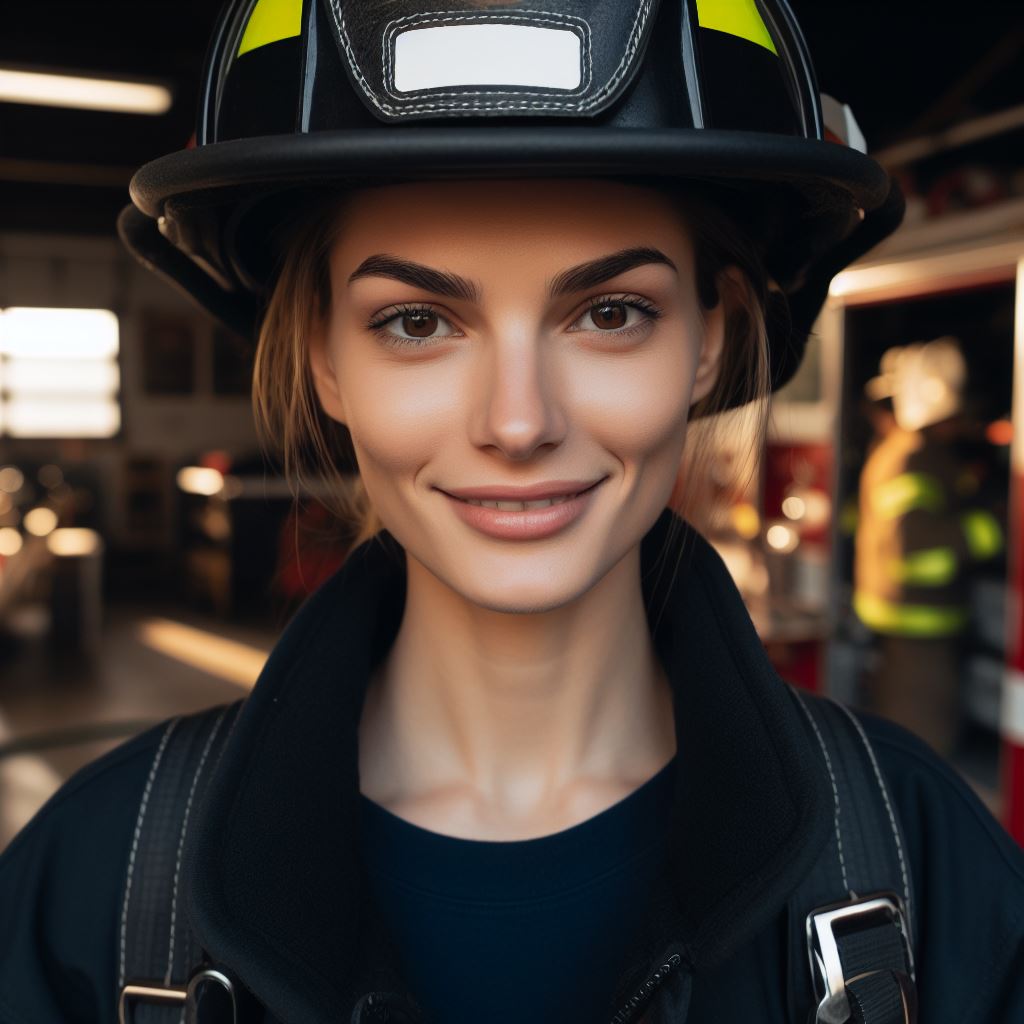
Find Out More: Military Strategy: The Art and Science of Modern Warfare
Future Trends and Innovations
As technology continues to advance, the future of firefighting gear holds great promise.
Here we discuss potential future advancements in firefighting gear, explore emerging technologies, highlight the use of robotics and drones, and emphasize the importance of ongoing research and development.
Potential Advancements in Firefighting Gear
- Smart gear with built-in sensors and data collection capabilities is a game changer for firefighters.
- These sensors can monitor vital signs, oxygen levels, body temperature, and provide real-time updates.
- Advanced materials and fabrics are being developed to enhance protection against heat, flames, and toxins.
- Fire-resistant nanomaterials and lightweight yet robust designs are potential future trends for firefighting gear.
- Integrated communication systems within gear can improve communication between firefighters and incident command.
Exploring Emerging Technologies
- One exciting emerging technology in firefighting gear is the use of augmented reality (AR).
- AR can provide firefighters with enhanced situational awareness and navigation support inside burning structures.
- Another emerging technology is the use of drones to aid in firefighting operations.
- Equipped with thermal imaging cameras, drones can quickly locate hotspots and assist in directing firefighting efforts.
- Furthermore, drones can assess structural integrity, helping to prevent firefighter injuries.
The Role of Robotics and Drones
- Robotic firefighters and drones have the potential to revolutionize firefighting operations.
- Robots can enter hazardous environments and perform tasks that would be dangerous for human firefighters.
- Drones can be deployed to assess large fire incidents and provide real-time aerial footage for better situational awareness.
- Autonomous drones with fire suppression capabilities can also be utilized to extinguish fires in hard-to-reach areas.
- However, human firefighters will always remain an integral part of firefighting operations.
Ongoing Research and Development
- Ongoing research and development are crucial in advancing firefighter safety.
- Collaboration between firefighters, scientists, and engineers is key to developing innovative firefighting gear.
- Testing and simulation facilities help refine gear designs, ensuring optimal protection and performance.
- Continuous improvement in gear technology and training programs is essential to adapt to evolving fire risks.
- Investing in research and development will ultimately save lives and enhance firefighter capabilities.
In summary, the future of firefighting gear looks promising with the potential advancements in smart gear, emerging technologies such as AR and drones, and the continuous research and development efforts.
These innovations aim to increase firefighter safety, improve situational awareness, and enhance firefighting operations in the face of increasingly complex fire incidents.
Read: Women in the U.S. Military: Breaking Barriers & Traditions
Gain More Insights: How to Become a Detective in the USA: Step-by-Step Guide
Conclusion
In conclusion, this blog post discussed the advancements in firefighting gear in the United States.
It highlighted key points such as the improved materials used, enhanced protection, and increased mobility offered by the new gear.
It emphasized the importance of these advancements in ensuring the safety and effectiveness of firefighters in their line of duty.
By continuously staying updated with the latest innovations in firefighting gear, firefighters can better equip themselves to handle dangerous situations.
The advancements in gear contribute to reducing the risks and increasing the efficiency of firefighting operations.
It is crucial for firefighters and fire departments to invest in modern gear and training to ensure the highest level of safety and success in their missions.
By regularly reviewing and upgrading their gear, firefighters can stay ahead of the curve and be prepared for any unforeseen circumstances.
Moreover, it is essential for readers to actively seek information on the latest developments in firefighting gear.
Technology is constantly evolving, and new breakthroughs can make a significant difference in the performance and well-being of firefighters.
Keeping up-to-date ensures that firefighters are utilizing the most advanced gear available, giving them a competitive advantage in their jobs.
In the end, advancements in firefighting gear are not just about keeping up with the trends, but about prioritizing firefighter safety and effectiveness.
It is crucial for firefighters, fire departments, and the public to recognize the value of these innovations.
As technology continues to evolve, it is vital to encourage ongoing research, development, and investment in firefighting gear to ensure the utmost protection and success for our brave firefighters.
Let us all stay proactive in supporting these advancements and in keeping our firefighters safe and effective in their life-saving duties.
[E-Books for Sale]
The Big Book of 500 High-Paying Jobs in America: Unlock Your Earning Potential
$19.99 • 500 High-Paying Jobs • 330 pages
Explore 500 high-paying jobs in America and learn how to boost your career, earn more, and achieve success!
See All 500 High-Paying Jobs of this E-Book
1001 Professions Without a Degree: High-Paying American Jobs You Can Start Now
$19.99 • 1001 Professions Without a Degree • 174 pages
Discover 1001 high-paying jobs without a degree! Unlock career tips, skills, and success strategies for just $19.99!

